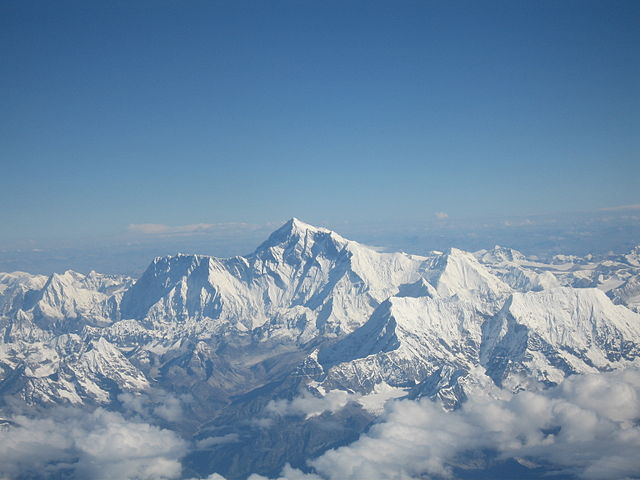 Have you ever thought about climbing Mount Everest? You might want to make your travel plans now because the glaciers that cloak this mighty mountain might not be around in the not-so-distant future.
Have you ever thought about climbing Mount Everest? You might want to make your travel plans now because the glaciers that cloak this mighty mountain might not be around in the not-so-distant future.
Scientists found that over the last 50 years the glaciers in the Mount Everest region have shrunk by 13% and the snowline has shifted upward by 590 feet. This shrink coincides with a gradual increase in the average temperature and decrease in precipitation over the last 20 years.
Weather versus Climate
Climate change, or global warming, is the gradual change of weather patterns and average temperatures over a long period of time. While weather varies on a day-to-day basis, the effects of climate change are very subtle.
Detecting climate change is not an easy task—it’s like trying to measure the tide change while in a boat going up and down on the waves. However, with enough measurements and data taken over the course of several years, scientists can distinguish the long-term trends from the day-to-day variation.
Where are the glaciers going?
While it is impossible to tell if a few abnormally warm spring days are the result of climate change or natural weather variation, melting glaciers are a symptom of climate change because they are affected by long-term trends.
Glaciers form when snow and ice accumulate at high altitudes and compact into a thick blanket of ice. This blanket of ice flows downhill like a thick layer of molasses until it reaches warmer temperatures at lower altitudes and starts to melt. As the bottom of the glacier melts, snowstorms in the mountains continually replenish the top of the glacier with more compacted ice--creating a steady form-flow-melt cycle.
But if the climate gradually warms and the long-term trend changes, over time the ends of the glaciers will melt a little faster. And the top will lose some of the snow and ice that normally replenish the snowy pack. The gradual warming of the climate eventually changes the size and appearance of glaciers -- as scientists recently observed on Mount Everest.
Scientists have shown that today’s warming climate is a result of humans modifying the composition of the atmosphere through pollution—namely, carbon dioxide emissions, which trap heat that would normally radiate out into space. Even the snow and ice on the world’s highest peak are not immune from human activity.
[Adapted from the original press release here]






